-
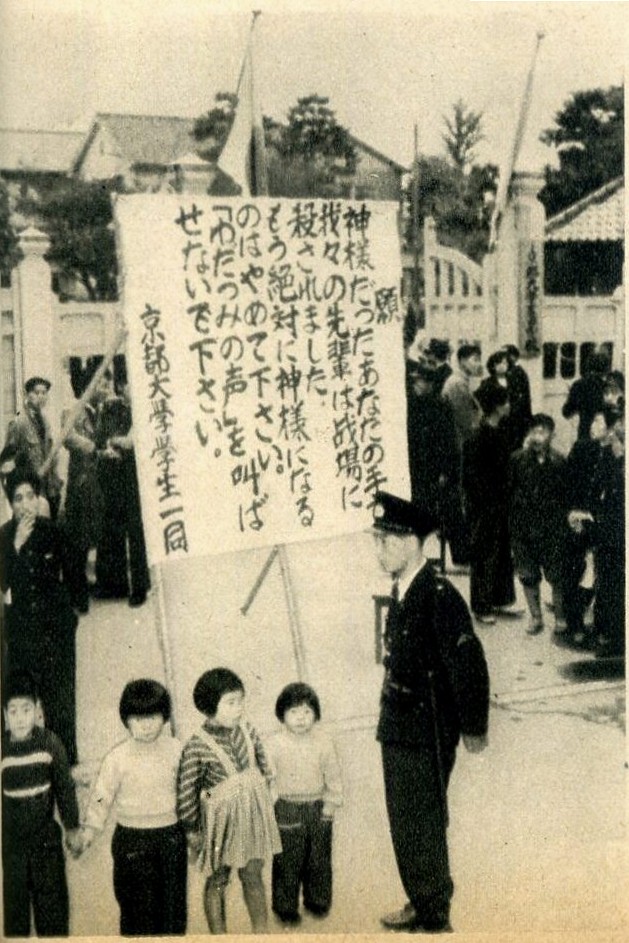
京大天皇事件
京大天皇事件(きょうだいてんのうじけん)は、1951年11月12日の昭和天皇の京都大学来学に際して発 生した混乱、およびこれを発端とする学生処分事件で、「京大事件」あるいは「天皇事件」とも称される。
-
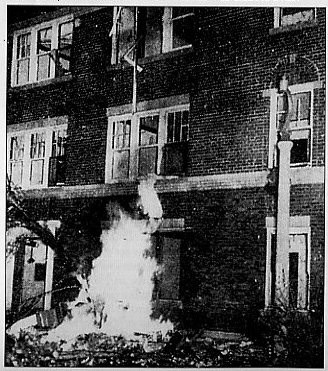
Cicero race riot of 1951
The Cicero race riot of 1951 occurred July 11–12, 1951, when a mob of 4,000 whites attacked an apartment building that housed a single black family in a neighborhood in Cicero, Illinois.
-

Grève des prisonniers d'Ekibastouz
La grève des prisonniers d'Ekibastouz (en russe : Экибасту́зская забастовка заключённых) est une grève qui se produisit dans la 6e division de Pestchanlag à Ekibastouz, au Kazakhstan, à la fin janvier 1952. Elle eut un grand retentissement du fait qu'elle sert de trame (en même temps que le soulèvement de Kengir) au scénario du film écrit en 1959 par Alexandre Soljenitsyne intitulé Les Tanks connaissent la vérité et à plusieurs chapitres (dont les chapitre 6 « Un évadé dans l'âme » et 11 « À tâtons nous rompons nos chaînes ») du troisième tome de L'Archipel du Goulag.
-

Paris protest against General Ridgway
On May 28, 1952, French communists marched in protest against a visit by American General Matthew Ridgway. The communists accused him of using biological weapons in the Korean War.
-

Cairo fire
The Cairo fire (Arabic: حريق القاهرة), also known as Black Saturday, was a series of riots that took place on 26 January 1952, marked by the burning and looting of some 750 buildings—retail shops, cafes, cinemas, hotels, restaurants, theatres, nightclubs, and the city's Opera House—in downtown Cairo. The direct trigger of the riots was the killing by British occupation troops of 50 Egyptian auxiliary policemen in the city of Ismaïlia in a massacre one day earlier. The spontaneous anti-British protests that followed these deaths were quickly seized upon by organized elements in the crowd, who burned and ransacked large sectors of Cairo amidst the unexplained absence of security forces. The fire is thought by some to have signalled the end of the Kingdom of Egypt. The perpetrators of the Cairo Fire remain unknown to this day, and the truth about this important event in modern Egyptian history has yet to be established. The disorder that befell Cairo during the 1952 fire has recently been compared to the chaos that followed the anti-government protests of 25 January 2011, which saw demonstrations take place amidst massive arson and looting, an inexplicable withdrawal of the police and organized prison- breaking.
-

1952 steel strike
The 1952 steel strike was a strike by the United Steelworkers of America against U.S. Steel and nine other steelmakers. The strike was scheduled to begin on April 9, 1952, but US President Harry Truman nationalized the American steel industry hours before the workers walked out. The steel companies sued to regain control of their facilities. On June 2, 1952, in a landmark decision, the US Supreme Court ruled in Youngstown Sheet & Tube Co. v. Sawyer, 343 U.S. 579 (1952), that the President lacked the authority to seize the steel mills.
-
血のメーデー事件
血のメーデー事件(ちのメーデーじけん)は、1952年5月1日(木曜日)に東京の皇居外苑で発生した、デ モ隊と警察部隊とが衝突した騒乱事件である。事件は一部の左翼団体が暴力革命準備の実践の一環として行った ものと見られている。戦後の学生運動で初の死者を出した。
-

Vorkuta uprising
The Vorkuta Uprising was a major uprising of forced labor camp inmates at the Vorkuta Gulag in Vorkuta, Russian SFSR, USSR from 19 July (or 22 July) to 1 August 1953, shortly after the arrest of Lavrentiy Beria. The uprising was violently stopped by the camp administration after two weeks of bloodless standoff.
-

1953 Kano riot
The Kano riot of 1953 refers to the riot, which broke out in the ancient city of Kano, located in Northern Nigeria, in May 1953. The nature of the riot were clashes between Northerners who were opposed to Nigeria's Independence and Southerners made up of mainly the Yorubas and the Igbos who supported immediate independence for Nigeria. The riot that lasted for four days claimed many lives of the Southerners and Northerners and many others were wounded.
-

14 July 1953 demonstration
The 14 July 1953 demonstration was an incident in Paris during which a march of the Algerian anti- colonial Movement for the Triumph of Democratic Liberties was halted by the police, killing seven and seriously injuring about 50.
-

1953 Ceylonese Hartal
The Hartal 1953 was a country-wide demonstration of civil disobedience and strike, commonly known as a hartal, held in Ceylon (now Sri Lanka) on 12 August 1953. It was organized to protest of the policies and actions of the incumbent United National Party government. It was the first mass political action in Ceylon and the first major social crisis after independence. This event is of historical significance because it was the first people's struggle against an elected government in the country.
-

General strike of 1954
The general strike of 1954 was a watershed political and economic event in the history of Honduras that ushered in widespread change.
-

1954 National Service riots
In December 1953, the British colonial government in Singapore passed the National Service Ordinance, requiring all male British subjects and Federal citizens between the ages of 18-20 to register for part-time National Service. The deadline for registration was on the 12th May 1954 and those who fail to register would either be jailed or fined. On the 12th May 1954, students from the Chinese Middle Schools still did not register themselves for National Service. In light of the impending deadline for registration and withrequests from the Chinese students, Chief Secretary William Goode would later meet representatives from the affected student body in the government house on 13 May 1954.
-
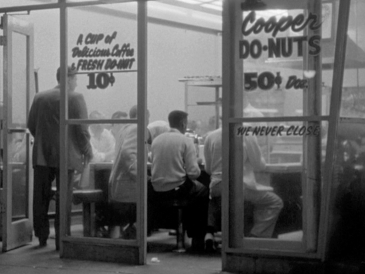
Cooper Do nuts Riot
The Cooper Do-nuts Riot was a small uprising in response to police harassment of LGBT people at the 24-hour Cooper Do-nuts cafe in Los Angeles in May 1959. This occurred 10 years prior to the better known Stonewall riots in New York City and is viewed by some historians as the first modern LGBT uprising in the United States.
-

Richard Riot
The Richard Riot was a riot on March 17, 1955 (Saint Patrick's Day), in Montreal, Quebec, Canada. The riot was named after Maurice Richard, the star ice hockey player for the Montreal Canadiens of the National Hockey League (NHL). Following a violent altercation on March 13 in which Richard hit a linesman, NHL president Clarence Campbell suspended him for the remainder of the 1954–55 NHL season, including the playoffs. Montreal fans protested that the suspension was too severe; the team's largely Francophone fan base claimed the length of the suspension was motivated by Richard's French Canadian ethnicity. Outside of Montreal, however, the suspension was seen as justified and, if anything, too short.
-

Sunagawa Struggle
The Sunagawa Struggle (Japanese: 砂川闘争, Hepburn: Sunagawa Tōsō, also romanized as "Sunakawa") was a series of protests in Japan, starting in 1955 and continuing until the early 1960s, against the expansion of the Tachikawa Airfield into the nearby village of Sunagawa.
-

Hock Lee bus riots
The Hock Lee bus workers' strike began on April 23, 1955. The incident was a result of failed negotiations between the Hock Lee Amalgamated Bus Company and its bus workers. The workers wanted better working conditions while the employers wanted to protect their business interests. The strikes eventually escalated and resulted in a clash among the Singapore Bus Workers Union, Hock Lee Employee's Union, the Singapore Chinese Middle Schools Student Union and law enforcement on May 12, 1955. The event has been commonly understood as a violent confrontation between colonialists and communists. The event was however also born out of the conditions of colonial society as well as being part of a necessary modernisation trajectory that Singapore was embarking on.
-

Istanbul pogrom
The Istanbul pogrom, also known as the Istanbul riots or September events (Greek: Σεπτεμβριανά Septemvriana, "Events of September"; Turkish: 6–7 Eylül Olayları, "Events of 6–7 September"), were organized mob attacks directed primarily at Istanbul's Greek minority on 6–7 September 1955. The riots were orchestrated by the Tactical Mobilisation Group, the special operations unit of the Turkish Army set up as Operation Gladio's Turkish branch;[dubious – discuss] the Counter- Guerrilla (another Operation Gladio-related organisation),[dubious – discuss] and the National Security Service, the predecessor of today's National Intelligence Organisation. The events were triggered by the false news that the day before, Greeks had bombed the Turkish consulate in Thessaloniki, in northern Greece—the house where Mustafa Kemal Atatürk had been born in 1881. A bomb planted by a Turkish usher at the consulate, who was later arrested and confessed, incited the events. The Turkish press, conveying the news in Turkey, was silent about the arrest and instead insinuated that Greeks had set off the bomb.
-
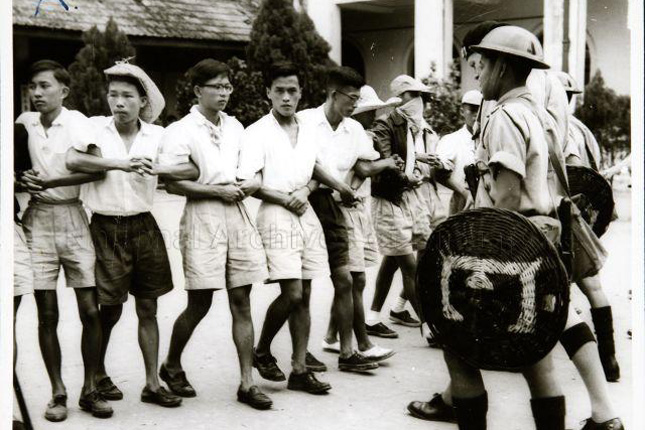
Chinese middle schools riots
The Chinese middle schools riots were a series of riots that broke out in the Chinese Singaporean community in 1956, resulting in 13 people killed and more than 100 injured.
-

Streik um die Lohnfortzahlung im Krankheitsfall
Der Streik um Lohnfortzahlung bei Krankheit begann am 24. Oktober 1956 in Schleswig-Holstein und entwickelte sich zum längsten Arbeitskampf in Deutschland seit 1905. Mehr als 34.000 Beschäftigte der Metallindustrie erstreikten nach 114 Tagen einen Tarifvertrag, der die Arbeiter bei Krankheit besser absicherte, da nun der Lohn bei Krankheit weitergezahlt wurde. Damit wurde ein Grundstein für die heutigen tarifvertraglichen und gesetzlichen Regelungen zur Lohnfortzahlung bei Krankheit gelegt.
-

Poznań protests of 1956
The Poznań protests of 1956, also known as Poznań June (Polish: Poznański Czerwiec), were the first of several massive protests against the communist government of the Polish People's Republic. Demonstrations by workers demanding better working conditions began on 28 June 1956 at Poznań's Cegielski Factories and were met with violent repression.
-

Women's March (South Africa)
Women's March was a march that took place on 9 August 1956 in Pretoria, South Africa. The marchers' aims were to protest the introduction of the Apartheid pass laws for black women in 1952 and the presentation of a petition to the then Prime Minister J.G. Strijdom.
-

Finnish general strike of 1956
The Finnish general strike of 1956 is the latest of the three general strikes in Finnish history; there have also been general strikes in 1905 and 1917. The 1956 strike occurred from March 1 to March 20, 1956. About 500,000 Finnish citizens took part in the strike.
-

Bucharest student movement of 1956
The events in Poland which led to the elimination of that country's Stalinist leadership and the rise to power of Władysław Gomułka on 19 October 1956 provoked unrest among university students in Eastern bloc countries. The state of unrest in Communist Poland began to spread into Hungary. As early as 16 October 1956, students from Szeged left the Communist-created students' union (DISZ), re-establishing the MEFESZ (Union of Hungarian University and Academy Students), a democratic organisation that the regime of Mátyás Rákosi had suppressed. Within a few days, students from Pécs, Miskolc and Sopron had done likewise. On 22 October 1956, students from the Budapest University of Technology and Economics compiled a list of sixteen points containing key national policy demands. When they found out about the intention of the Hungarian Writers' Union to express its solidarity with Poland by placing a crown near the statue of Polish general Józef Bem, a hero of the Hungarian revolution of 1848–49, the students decided to organise a parallel demonstration in support of the Poles. At the protest on the afternoon of 23 October 1956, the students read their proclamation, an act that marked the beginning of the Hungarian Revolution of 1956.
-

إضراب الطلبة الجزائريين 1956 ويكيبيديا
إضراب الطلبة الجزائريين 19 مايو 1956 في الجزائر هو إضراب طلابي عام الذي دعا إليه الإتحاد العام للطلبة المسلمين الجزائريين بتاريخ 19 مايو 1956، وكان هذا الإضراب جزءًا من دعم الطلاب لثورة التحرير الجزائرية وبداية إلتحاقهم بها.
-
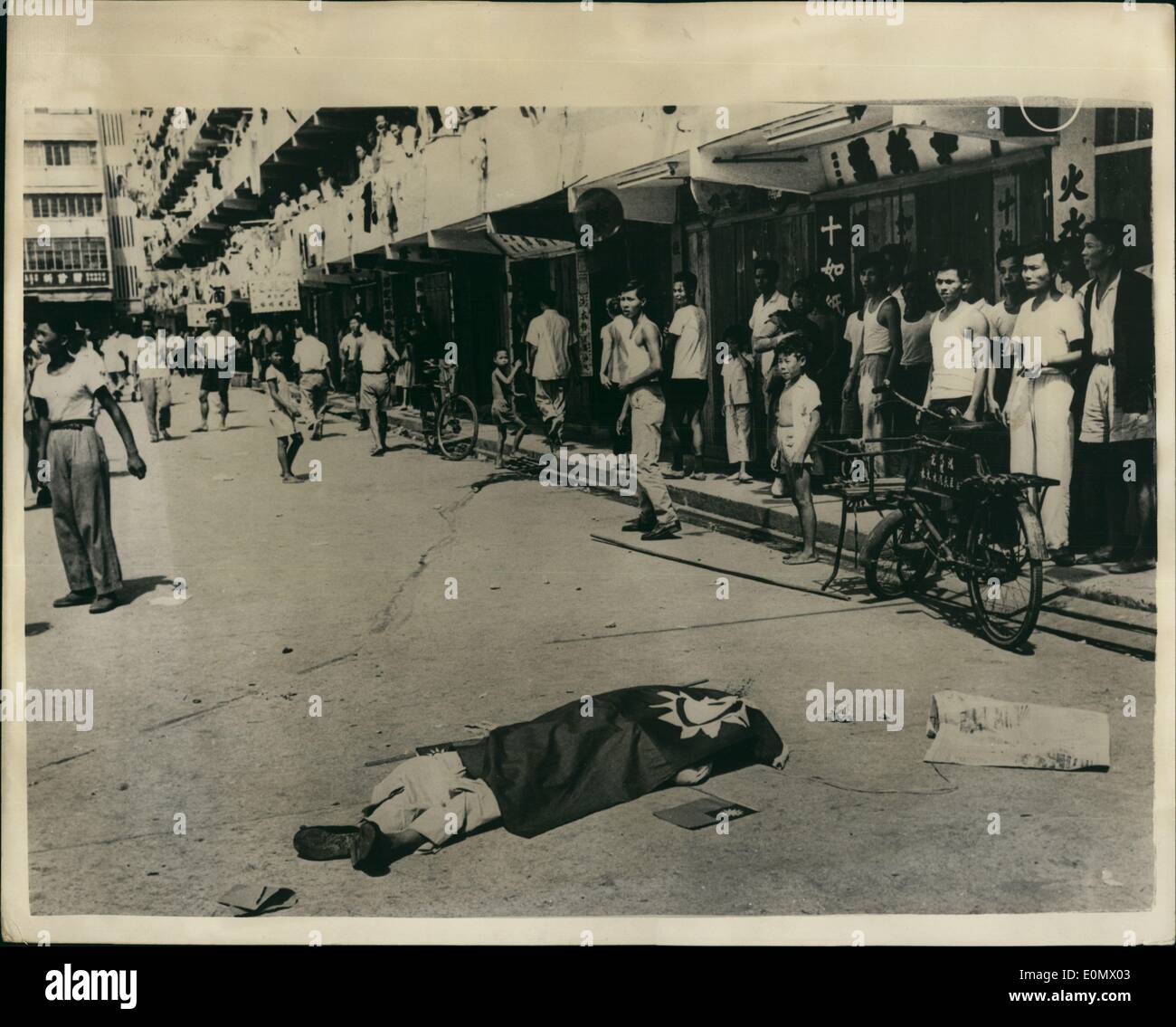
Hong Kong 1956 riots
The Hong Kong 1956 protests were the result of escalating provocations between pro-Nationalist and pro-Communist factions in Hong Kong during Double Ten Day, 10 October 1956.
-

1957 Ramnad riots
The Ramnad riots were a series of violent clashes that occurred between July and September 1957 in the Ramnad district and in southern Tamil Nadu, India. The violence was between Thevars supporting the Forward Bloc, and pro-Congress Devendrakula Velalar, and was triggered by a by-election held in the aftermath of the Madras Legislative Assembly elections of earlier that year.
-

Royal Ice Cream sit in
The Royal Ice Cream sit-in was a nonviolent protest in Durham, North Carolina, that led to a court case on the legality of segregated facilities. The demonstration took place on June 23, 1957 when a group of African American protesters, led by Reverend Douglas E. Moore, entered the Royal Ice Cream Parlor and sat in the section reserved for white patrons. When asked to move, the protesters refused and were arrested for trespassing. The case was appealed unsuccessfully to the County and State Superior Courts.
-

Vaga de tramvies (1957)
La Vaga de tramvies de 1957 fou el boicot que els ciutadans de Barcelona van fer a la Companyia de Tramvies de Barcelona del 14 al 25 de gener de 1957, de forma similar a la vaga del 1951. El motiu inicial fou l'augment de 20 cèntims del preu del bitllet, però la protesta expressava el profund malestar entre la població per les duríssimes condicions de vida de la majoria de la població, per la crisi econòmica i, molt especialment, una manifestació contra el règim franquista que es consolidava gràcies al suport dels Estats Units.
-
May 24 incident
The May 24 incident (Chinese: 五二四事件), also called the Liu Ziran incident (劉自然事件) and the Reynolds riot, was an international incident between the United States and Taiwan that started over the killing of an ROC national and a court-martial conducted by U.S. military personnel in Taiwan, resulting in protests including separate mob attacks on the U.S. Embassy in Taipei, the United States Information Service buildings and a police station.
-

Fets del Paranimf
Es coneix com els Fets del Paranimf els actes de protesta estudiantil ocorreguts a la Universitat de Barcelona el 18 i 19 de febrer de 1957. Va ser seguit el 21 de febrer amb una assemblea, considerada com la Primera Assemblea Lliure d'Estudiants de la universitat.
-

Großkundgebung von Schloss Sigmundskron
Die Großkundgebung von Schloss Sigmundskron bei Bozen in Südtirol fand am 17. November 1957 statt. Bei ihr wurde das Motto „Los von Trient“ geprägt, das in knapper Form die Maßnahmen des Südtirol- Pakets vorwegnahm und sich entscheidend auf die Ausgestaltung der Autonomie Südtirols auswirkte.
-

Murdochville strike
The Murdochville strike was a mining strike on March 10, 1957 in Quebec, during the regime of Quebec premier Maurice Duplessis. It provided the impetus and inspiration for other labour leaders to emerge and future calls for labour rights to become vocalized.
-

1957 Alexandra bus boycott
The 1957 Alexandra bus boycott was a protest undertaken against the Public Utility Transport Corporation (PUTCO) by the people of Alexandra in Johannesburg, South Africa.
-

1958 Paraguayan general strike
In August 1958, a general strike was organized in Paraguay. It was the first national general strike in the country. The strike was called by the Confederación Paraguaya de Trabajadores ('Paraguayan Workers' Confederation', CPT), with demand such as a 30% raise in salaries, a general declaration of amnesty, a lifting of the state of emergency, a more equitable economic policy, securing the freedom to participate in political and trade union activities and the holding of a constituent assembly.
-
1958 Notting Hill race riots
The Notting Hill race riots were a series of racially motivated riots that took place in Notting Hill, England, between 29 August and 5 September 1958.
-

Stávka v Trbovlje (1958)
Stávka v Trbovlje v lednu 1958 byla prvním významnějším incidentem, při kterém se jugoslávská komunistická moc setkala s nespokojenými horníky. Jednalo se o první stávku v zemi po druhé světové válce. Horníci tehdy během několikadenního protestu (od 13. do 16. ledna) požadovali zvýšení platů.
-

Wrzenie Przedborskie
Wrzenie Przedborskie – protest mieszkańców Przedborza przeciwko usunięciu przez władze komunistyczne krzyży z sal lekcyjnych miejscowej szkoły, który odbył się we wrześniu .
-

Aldermaston Marches
The Aldermaston marches were anti-nuclear weapons demonstrations in the 1950s and 1960s, taking place on Easter weekend between the Atomic Weapons Research Establishment at Aldermaston in Berkshire, England, and London, over a distance of fifty-two miles, or roughly 83 km. At their height in the early 1960s they attracted tens of thousands of people and were the highlight of the Campaign for Nuclear Disarmament (CND) calendar. Similar demonstrations also took place around the world.
-

1958 Grozny riots
The Grozny riots of 1958 occurred between 23 and 27 August that year in Grozny (Soviet Union). Although beginning as a small-scale event, it turned a major event in the history of the city, of Chechnya and of Russo-Chechen relations, starting a series of ethnic riots, to continue until 1965.
-

Dockum Drug Store sit in
The Dockum Drug Store sit-in was one of the first organized lunch counter sit-ins for the purpose of integrating segregated establishments in the United States. The protest began on July 19, 1958 in downtown Wichita, Kansas, at a Dockum Drug Store (a store in the old Rexall chain), in which protesters would sit at the counter all day until the store closed, ignoring taunts from counter- protesters. The sit-in ended three weeks later when the owner relented and agreed to serve black patrons. Though it wasn't the first sit-in, it is notable for happening before the well known 1960 Greensboro sit-ins.
-

Raggarkravallerna i Kristianstad
Raggarkravallerna i Kristianstad inträffade den 26 juli 1959, och blev mycket blev uppmärksammade i hela Sverige, inte minst i medierna. Kravallerna inträffade i samband med motorcykeltävlingarnas Grand Prix i Kristianstad, som arrangerades sista helgen i juli detta år. Tidigare hade tävlingarna avgjorts i Hedemora, men på grund av fylleri och ordningsproblem stoppade myndigheterna i Kopparbergs län tävlingarna, vilka i stället flyttades till Kristianstad.
-

Vaga Nacional Pacífica de 1959
La Vaga Nacional Paífica de 1959 va ser una vaga general convocada a tot l'estat espanyol el 18 de juny de 1959.
-

Léopoldville riots
The Léopoldville riots were an outbreak of civil disorder in Léopoldville (modern-day Kinshasa) in the Belgian Congo which took place in early 1959 and which were an important moment for the Congolese independence movement. The rioting occurred when members of the Alliance des Bakongo (ABAKO) political party were not allowed to assemble for a protest and colonial authorities reacted harshly. The exact death toll is not known, but at least 49 people were killed and total casualties may have been as high as 500. The Congo received its independence on 30 June 1960, becoming the Republic of the Congo.
-

Steel strike of 1959
The steel strike of 1959 was a 116-day labor union strike (July 15 – November 7, 1959) by members of the United Steelworkers of America (USWA) that idled the steel industry throughout the United States. The strike occurred over management's demand that the union give up a contract clause which limited management's ability to change the number of workers assigned to a task or to introduce new work rules or machinery which would result in reduced hours or numbers of employees. The strike's effects persuaded President Dwight D. Eisenhower to invoke the back-to-work provisions of the Taft-Hartley Act. The union sued to have the Act declared unconstitutional, but the Supreme Court upheld the law.
-

Daegu Democracy Movement
The Daegu Democracy Movement (also known as the 2.28 Daegu Democracy Movement) broke out February 28, 1960, ahead of the March 1960 South Korean presidential election during the period of Syngman Rhee's government, in resistance against his Liberal Party's dictatorship. After this movement, the 3.15 Masan democracy movement broke out, and the Daegu Democracy Movement became the main cause of the April Revolution.
-

1960 Force Publique mutiny
On 5 July 1960, soldiers of the garrisons of Léopoldville and Thysville of the Force Publique, the army of the newly independent Democratic Republic of the Congo (then Republic of the Congo) mutinied against their white officers. The revolt quickly spread throughout the Lower Congo and engulfed the country in disorder, beginning the Congo Crisis.
-

Belgian general strike of 1960 1961
The general strike of 1960–1961 (French: Grève générale de 1960–1961), known popularly in Wallonia as the Strike of the Century (Grève du Siècle), was a major series of strikes in Belgium which began on 14 December 1960 and lasted approximately six weeks. The strike was instigated by the militant trade union, the General Labour Federation of Belgium (Fédération Générale du Travail de Belgique, or FGTB; Algemeen Belgisch Vakverbond, ABVV), against an attempt by the government of Gaston Eyskens to improve the state of Belgium's public finances by introducing a series of austerity measures known as the Unitary Law (Loi Unique or Eenheidswet). It has been described as "one of the most serious class confrontations in Belgium's social history", which brought out 700,000 workers out on strike. Although the strike began across Belgium, it soon lost momentum in Flanders where workers returned to work after a few days. The strike continued in Wallonia, a region already starting to experience deindustrialization, for several weeks. The law was eventually passed on 14 February 1961.
-

April Revolution
The April Revolution (Korean: 4.19 혁명), also called the April 19 Revolution or April 19 Movement, were mass protests in South Korea against President Syngman Rhee and the First Republic from April 11 to 26, 1960 which led to Rhee's[clarification needed] resignation.
-
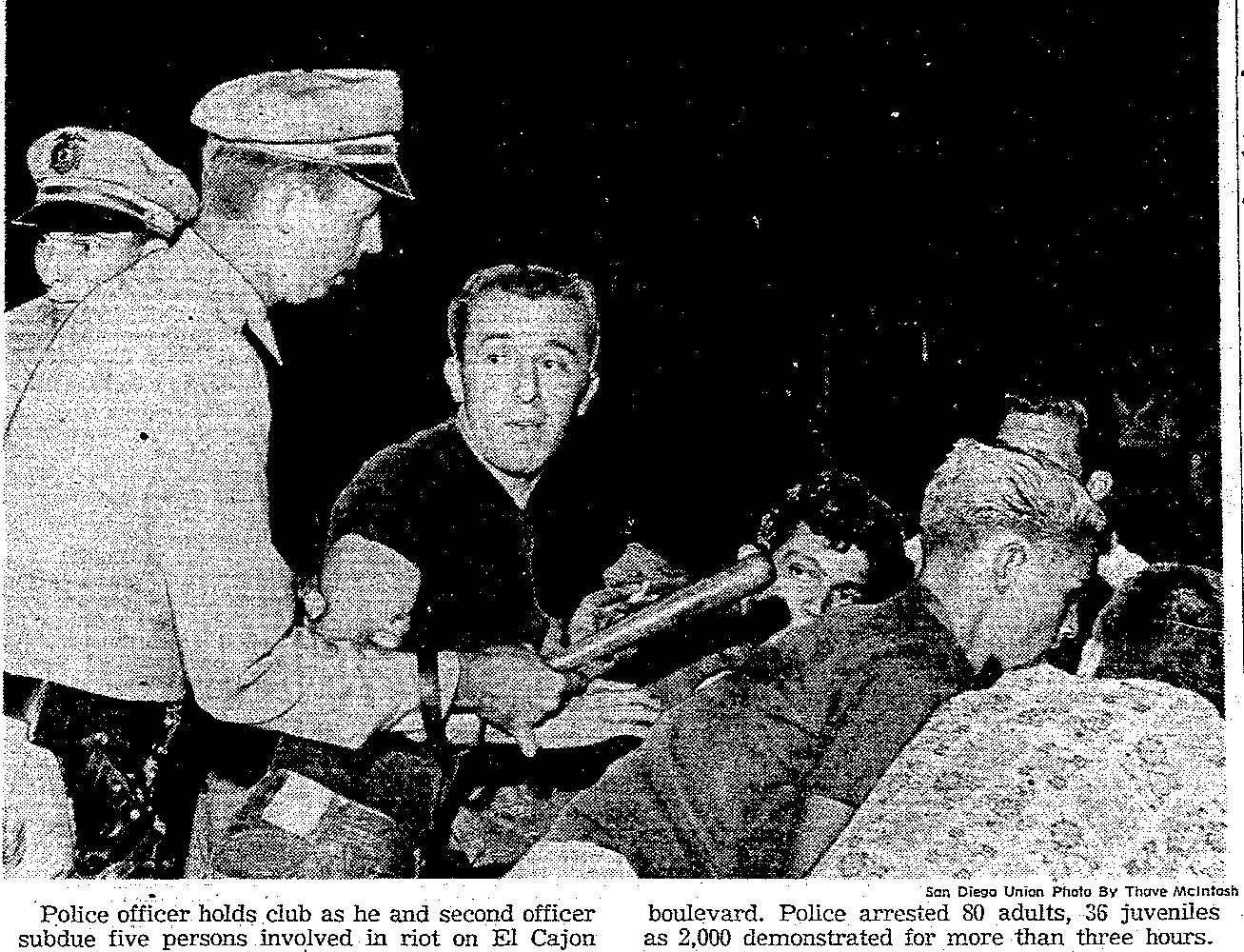
El Cajon Boulevard riot
The El Cajon Boulevard riot was the official name of what the San Diego Union called the Drag Strip Riot. Some people consider the El Cajon Boulevard Riot one of the first major youth riots of the 1960s.
-

Assamese Language Movement
The Assamese Language Movement (Assamese: /ɔxɔmia bʱaxa andʊlɔn/) refers to a series of political activities demanding the recognition of the Assamese Language as the official language and medium of instruction in the educational institutions of Assam, India.
-

1960 Writers Guild of America strike
The 1960 Writers Guild of America strike was a labor dispute held by both Writers Guilds of America (WGAW and WGAE), against the Association of Motion Picture Producers. It lasted for 146 days (from January 16 until June 10, 1960, with network writers joining mid-March, although an agreement between the involved parties was signed two days later after the strike), making it the second longest strike ever held by both unions by just one week less than the 1988 writers strike. This dispute was meant to raise concerns about broadcast royalties for movies that air on television.
-

Draft card burning
Draft-card burning was a symbol of protest performed by thousands of young men in the US and Australia in the 1960s and early 1970s. The first draft-card burners were American men taking part in the opposition to United States involvement in the Vietnam War. The first well-publicized protest was in December 1963, with a 22-year old conscientious objector, Eugene Keyes, setting fire to his card on Christmas Day in Champaign, Illinois. In May 1964, a larger demonstration, with about 50 people in Union Square, New York, was organized by the War Resisters League chaired by David McReynolds.
